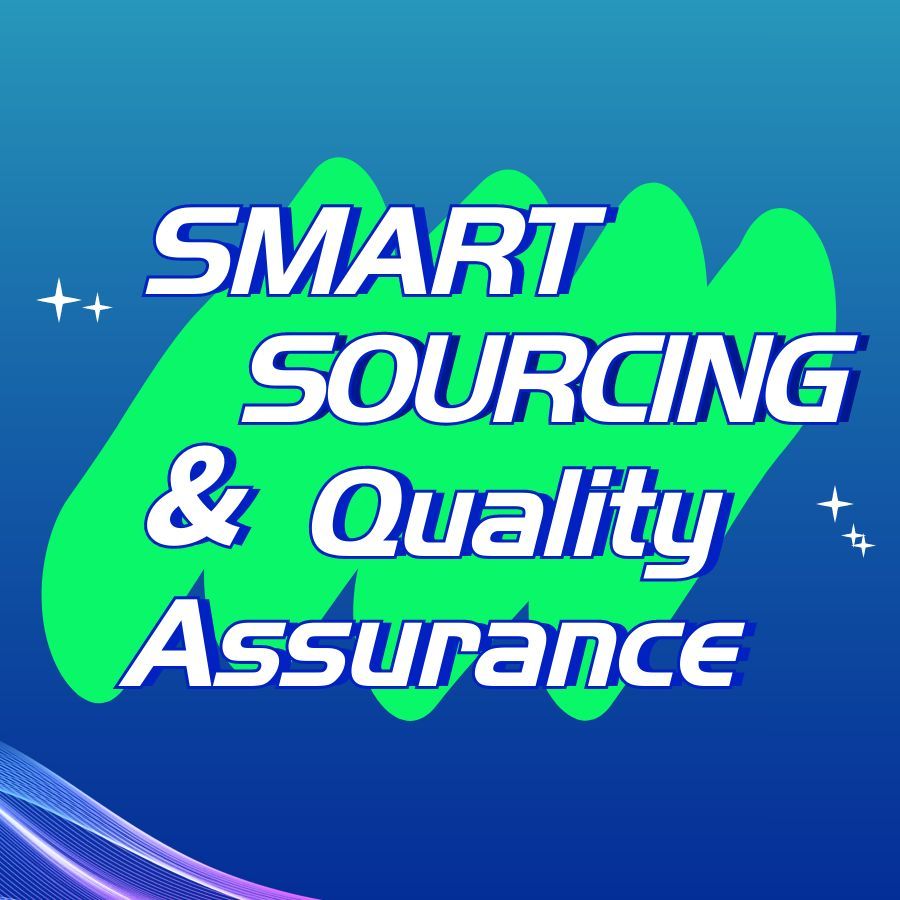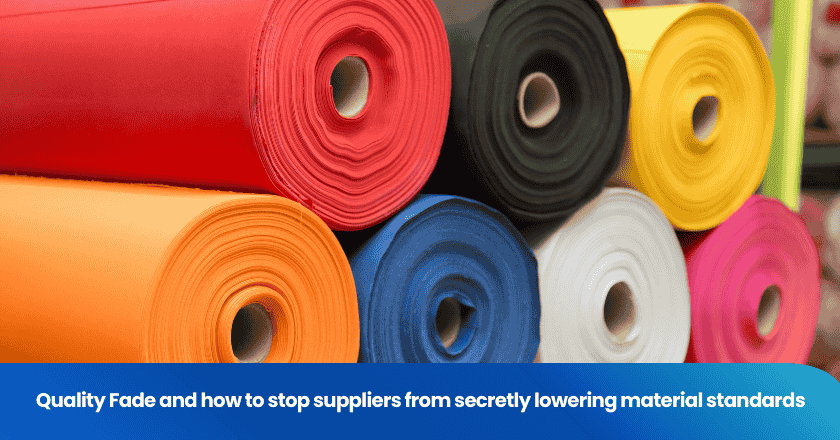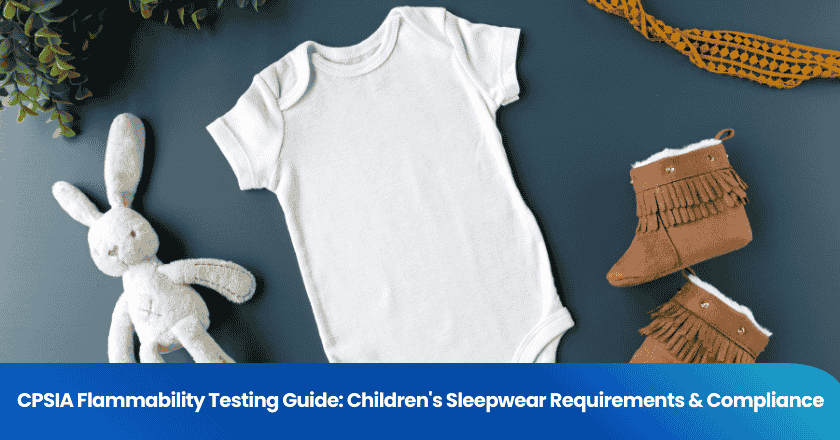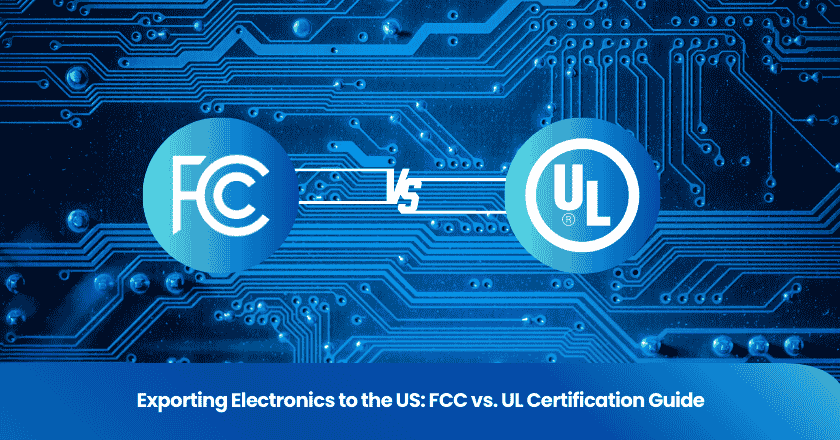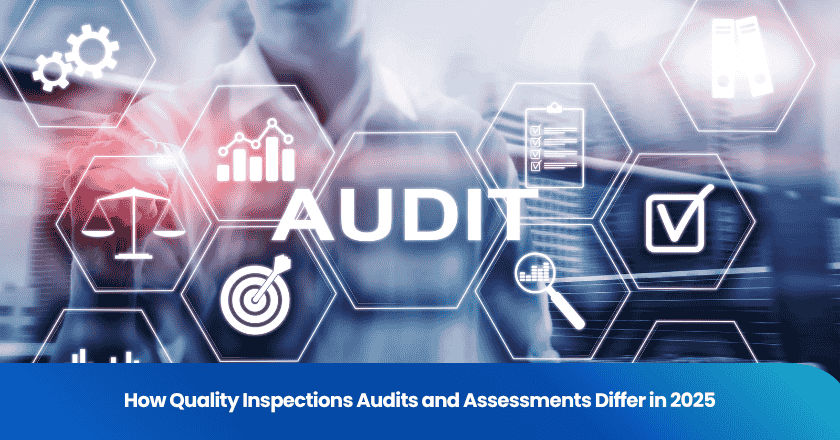
You face distinct choices in 2025 when managing quality: quality inspection, audit, and assessment each serve unique functions. You must recognize these differences to align your strategy with your goals. Most organizations now conduct at least two audits or assessments annually, with 58% performing four or more.
Quality inspection targets immediate issues, while audits and assessments drive broader improvements. Automated tools and AI help predict problems and streamline evidence collection, enhancing your ability to achieve measurable outcomes.
Key Differences
Quality Inspection vs Audit
You need to understand the distinction between quality inspection and audit to make informed decisions in 2025. The audit vs inspection debate centers on scope, timing, and outcomes. Quality inspection focuses on immediate, observable issues. You use inspections to check products, processes, or environments for compliance with specific standards. Inspections often happen at the point of production or service delivery. You receive direct feedback and can act quickly to correct problems.
Audits, on the other hand, take a broader view. You use audits to evaluate entire systems, policies, or procedures. The audit vs inspection comparison shows that audits look for patterns, root causes, and systemic risks. Audits often occur at scheduled intervals and involve reviewing documentation, interviewing staff, and analyzing data. You gain strategic insights that help you improve processes over time.
You see that inspections target specific hazards, while audits address broader compliance and risk management. The audit vs inspection approach helps you choose the right method for your goals.
Assessment Overview
Assessments offer a different perspective in quality management. You use assessments to measure performance, identify gaps, and prioritize improvements. Assessments can include surveys, interviews, and data analysis. You do not limit assessments to compliance; instead, you focus on overall effectiveness and readiness.
When you complete an assessment, you receive actionable recommendations tailored to your needs. Here is how outcomes differ:
- Inspections provide immediate, specific recommendations to address identified hazards.
- Audits offer comprehensive insights and strategic recommendations for systemic improvements.
- Assessments deliver prioritized actions that help you plan long-term changes and allocate resources effectively.
You benefit from assessments when you want to benchmark performance, prepare for regulatory changes, or drive continuous improvement. Assessments complement inspections and audits, giving you a complete view of your quality landscape.
Quality Inspection Explained
What Is a Quality Inspection
You use a quality inspection to verify that products, processes, or services meet defined standards. This process helps you catch defects early and maintain consistency. In 2025, you can choose from several types of inspection in manufacturing:
1. Pre-Production Inspection: Check raw materials and components before production starts.
2. In-Process Inspection: Monitor quality at specific points during manufacturing.
3. Final Product Inspection: Confirm finished goods meet specifications before shipping.
4. Sampling Inspection: Evaluate a sample from a batch rather than every item.
5. Continuous Inspection: Assess every product on the line for comprehensive assurance.
6. Specialized Techniques: Apply methods like direct visual, microscopic, or thermal imaging inspection.
You measure the effectiveness of a quality inspection using metrics such as defect detection efficiency, defect density, and defect leakage. Automation and AI now play a major role, increasing speed and accuracy. Real-time monitoring and data analytics help you make informed decisions and improve your inspection process.
When to Use Quality Inspections
You should implement a quality inspection when you need to:
- Meet detailed standards or customer expectations.
- Ensure skilled inspectors and proper tools are available.
- Maintain accurate records for traceability.
- Support continuous improvement through regular audits and reviews.
You also follow key steps, such as evaluating findings, documenting results, and verifying corrective actions. Automation and AI can further enhance your inspection process, making it more efficient and reliable.
Audit Fundamentals
What Is a Quality Audit
You use an audit to systematically evaluate your processes, systems, or products against defined standards. An audit helps you identify gaps, verify compliance, and drive improvements. According to ISO 19011 in 2025, every quality audit includes three essential components : Audit program management、The audit process、Auditor competence.
You manage your audit program to ensure consistency and effectiveness. The audit process involves planning, execution, and reporting. Auditor competence ensures that your team has the skills and knowledge to deliver reliable results. You can conduct internal or external audits, each serving different purposes.
| Aspect | Internal Audits | External Audits |
|---|---|---|
| Frequency | More frequent, can be real-time | Less frequent, often annual or semi-annual |
| Purpose | Maintain internal standards | Provide assurance to external stakeholders |
| Timing | Ongoing, proactive | Ex post facto, retrospective analysis |
| Stakeholder Assurance | Primarily for internal teams | For regulators, customers, and partners |
| Issue Resolution | Helps catch and fix issues early | Validates compliance and data quality at a later stage |
You select the audit type based on your goals and stakeholder needs.
When to Use Audits
You should schedule an audit when you need to verify compliance, assess risk, or improve performance. The timing depends on several factors:
| Step | Description |
|---|---|
| 1 | Score each entity on key risk factors such as past audit performance and product impact. |
| 2 | Calculate the total risk score using a weighted formula. |
| 3 | Determine audit frequency based on the total risk score. |
| 4 | Document all relevant details for each entity, including risk scores and required actions. |
You benefit from regular audits by identifying issues early and maintaining stakeholder trust. You also ensure that your organization adapts to regulatory changes and industry best practices.
Assessment in Quality Management
What Is an Assessment
You use assessments to measure how well your processes, systems, or teams perform against set goals. Quality assessments help you identify strengths, weaknesses, and areas for improvement. You do not just check for compliance; you look at overall effectiveness and readiness for future challenges. In a food safety program, assessments allow you to review your controls, training, and documentation to ensure you meet both internal and regulatory standards.
Assessment Methods
You have access to more than a hundred different QA tools in 2025. These tools help you achieve excellence and efficiency in quality management.
You select methods based on your industry and specific needs. In manufacturing, you focus on evaluating the effectiveness and return on investment of AI technologies. In a food safety program, you rely on risk assessment and monitoring to prevent hazards and maintain compliance. Assessment methods now adapt to the unique characteristics and maturity levels of each sector, reflecting a shift toward customized evaluation frameworks.
Tip: Choose assessment tools that align with your organization's goals and the maturity of your processes.
When to Use Assessments
You should use assessments when you want to benchmark performance, prepare for audits, or drive continuous improvement. Assessments work well when you need to prioritize resources or plan for regulatory changes. You also benefit from assessments when launching a new food safety program or updating existing controls. By using quality assessments, you gain actionable insights that support long-term growth and risk management.
Comparison Table
You need a clear comparison to choose the right approach for your quality management strategy. The table below summarizes the main differences between quality inspections, audits, and assessments. This overview helps you understand how each process fits into your operations.
| Aspect | Quality Inspections | Audits | Assessments |
|---|---|---|---|
| Scope | Specific products, processes, or locations | Entire systems, policies, or procedures | Performance, effectiveness, and readiness |
| Purpose | Detect immediate issues and defects | Verify compliance and identify risks | Measure performance and prioritize improvements |
| Timing | Real-time or at critical control points | Scheduled intervals or as needed | Periodic or project-based |
| Outcomes | Immediate feedback and corrective actions | Strategic insights and compliance reports | Actionable recommendations and benchmarks |
| Objectives | Ensure standards are met at the source | Evaluate system integrity and compliance | Identify gaps and drive continuous improvement |
| Compliance Focus | Directly checks for standard adherence | Reviews documentation and processes | Assesses overall effectiveness, not just compliance |
| Risk Identification | Flags visible hazards or defects | Uncovers systemic risks and root causes | Highlights performance gaps and future risks |
Note: You should use quality inspections when you need fast results and direct feedback. Audits work best for verifying compliance and uncovering systemic issues. Assessments help you plan for long-term improvements and resource allocation.
You often combine quality inspections with audits and assessments to create a robust quality management system. Each process supports different goals, but together they give you a complete picture of your risks and opportunities.
- Use quality inspections to catch problems early and maintain high standards.
- Schedule audits to ensure your systems meet regulatory and industry requirements.
- Conduct assessments to benchmark your progress and guide strategic decisions.
This comparison helps you select the right tool for your needs and avoid gaps in your quality program.
Choosing the Right Approach
Factors to Consider
You must evaluate several factors before selecting between inspections, audits, and assessments. Each process serves a distinct purpose, and your choice should align with your organizational needs, risk profile, and regulatory compliance requirements.
The following table summarizes the key factors you should consider:
| Key Factor | Description |
|---|---|
| Risk Materiality | Focus on high-risk areas that require detailed procedures. Lower-risk areas may need less attention. |
| Control Testing Methodologies | Assess both the design and operational effectiveness of controls. Ensure they prevent or detect misstatements. |
| Alignment with Organizational Goals | Ensure your chosen approach supports your objectives and meets regulatory compliance standards. |
You should also consider how regulatory requirements shape your decision. In 2025, organizations adopt integrated systems to meet complex compliance demands. Unified platforms enhance collaboration between regulatory and quality functions. Successful implementation depends on cross-functional workflows and strong user adoption.
Tip: Review recent legislation and guidance, such as the BIOSECURE Act, the EU's Artificial Intelligence Act, and new FDA guidance on AI in drug development. These changes may affect your quality management strategy.
Common Pitfalls
You can avoid costly mistakes by understanding common pitfalls in quality management. Many organizations struggle with unclear objectives, lack of training, and poor documentation. These issues often lead to gaps in regulatory compliance and missed opportunities for improvement. The list below highlights frequent mistakes:
- Unclear objectives and goals
- Lack of employee training and development
- Poor documentation or record keeping
- Lack of integration of quality management systems
- Disregarding customer feedback
You can address these pitfalls by implementing targeted strategies.
The table below outlines common pitfalls and how you can avoid them:
| Common Pitfalls | Strategies to Avoid Them |
| Incomplete Documentation | Ensure thorough and accurate documentation of policies. |
| Lack of Employee Training | Provide comprehensive training on requirements and best practices. |
| Inconsistent Security Practices | Implement uniform security measures across departments. |
| Inadequate Internal Audits | Conduct regular internal audits to identify gaps. |
| Miscommunication with external assessors | Maintain clear communication with all stakeholders. |
Note: You should prioritize clear communication, regular training, and consistent documentation. These steps help you maintain regulatory compliance and improve your quality management outcomes.
You can use scenario-based recommendations to guide your decision:
- If you need immediate feedback on product quality, choose inspections.
- If you must verify system-wide compliance, schedule audits.
- If you want to benchmark performance or prepare for future changes, conduct assessments.
You will achieve better results when you match your approach to your specific needs and regulatory compliance obligations.
Impact on Quality Management
Continuous Improvement
You drive continuous improvement by using inspections, audits, and assessments as core elements of your quality management strategy. Each process helps you identify gaps and set clear goals for operational excellence and safety. You start by defining SMART goals for every improvement initiative. You break down each goal into actionable tasks, assign ownership, and allocate resources. This approach ensures accountability and makes progress easy to track.
Having established SMART goals, the next step is crafting a detailed action plan for implementation. This involves breaking down each goal into actionable tasks with clear ownership and resource allocation, ensuring accountability and facilitating progress tracking.
You analyze Environmental, Health, and Safety data to spot trends and mitigate risks. You transform raw data into actionable intelligence, which helps you make informed decisions and prioritize interventions. This process fosters a proactive culture focused on safety and quality management. You use metrics to measure progress and adjust your strategy as needed.
1. Specific: You define the desired outcome for each improvement initiative.
2. Measurable: You establish metrics to track progress.
3. Achievable: You set realistic goals based on available resources.
4. Relevant: You align goals with your overall quality management strategy.
5. Time-bound: You set a timeframe for achieving each goal.
You create a cycle of continuous improvement that strengthens safety and quality management across your organization.
Integrating Inspections, Audits, and Assessments
You enhance quality management by integrating inspections, audits, and assessments into a unified system. This approach streamlines operations and improves safety outcomes. You meet regulatory requirements more efficiently and promote a culture of ongoing improvement.
- Medical device manufacturers face increasing regulatory complexity.
- You streamline compliance across multiple markets by addressing various standards and inspection protocols.
You build a robust quality management system that supports safety, compliance, and continuous improvement. You use integrated processes to identify risks, implement corrective actions, and maintain high standards. This strategy helps you respond quickly to changes and ensures your organization remains competitive.
Tip: Review the latest quality management standards and connect with peers to stay updated on best practices.
FAQ
What is the main difference between a quality inspection and an audit?
You use a quality inspection to check specific products or processes for defects. An audit reviews your entire system or procedures. Inspections focus on immediate issues. Audits help you find patterns and improve your overall quality management.
When should you choose an assessment over an audit?
You should choose an assessment when you want to measure performance or readiness. Assessments help you identify gaps and set priorities. Use them to benchmark progress or prepare for changes, not just to check compliance.
How do food safety standards impact inspections and audits?
You must follow food safety standards during both inspections and audits. These standards guide your procedures and help you maintain safe products. Meeting these requirements protects consumers and supports your compliance efforts.
Why is regulatory oversight important in quality management?
Regulatory oversight ensures you follow laws and industry rules. It helps you maintain trust with customers and authorities. Strong oversight reduces risks and supports continuous improvement in your quality management system.
Can you combine inspections, audits, and assessments?
You can combine all three to strengthen your quality management. Inspections catch immediate problems. Audits verify compliance. Assessments guide long-term improvements. Using them together gives you a complete view of your risks and opportunities.
Grow your business with TradeAider Service
Click the button below to directly enter the TradeAider Service System. The simple steps from booking and payment to receiving reports are easy to operate.

